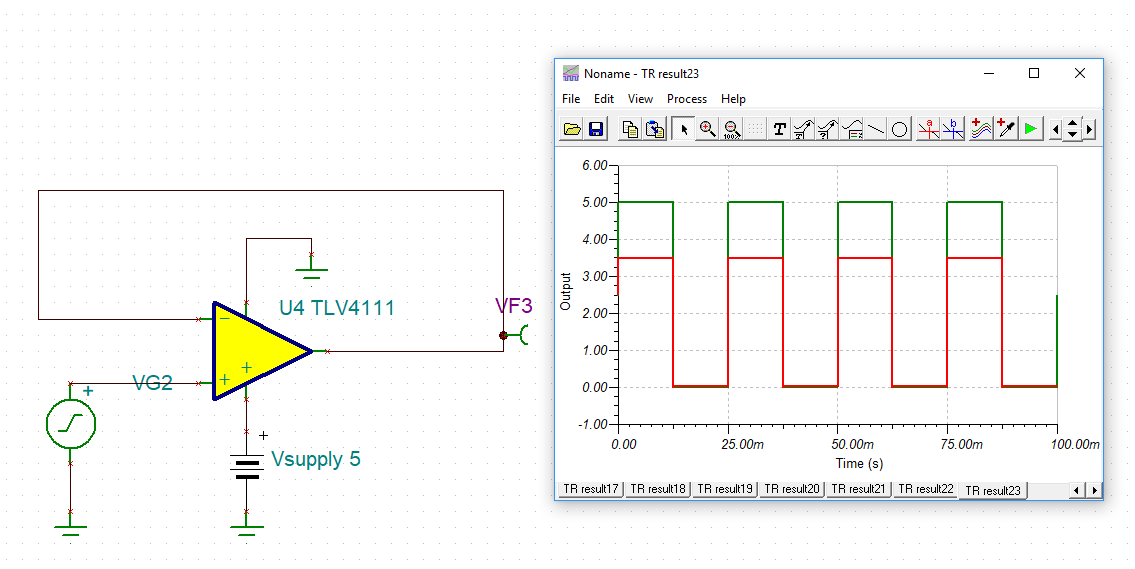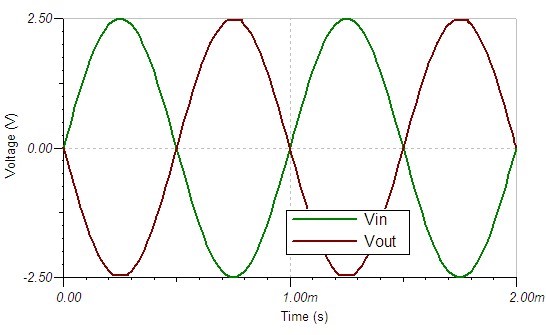Other Parts Discussed in Thread: TINA-TI, TLV4111
Tool/software: TINA-TI or Spice Models
I downloaded the TINA TI Spice model for this part from:
http://www.ti.com/product/TLV4113/toolssoftware
When running the model in feedback loop with a simple 5v PWM at 40Hz at the +ve terminal, with 5V and GND for supply I am unable to drive within 1V of the +ve supply rail. If I increase the supply voltage to e.g 5.5V then the voltage will go up to 4.5V.
Surely this goes against the datasheet rail to rail spec? Please let me know if this is somehow expected behaviour. In the attachment green is VG2, red is VF3. I have checked and the model signals are all connected correctly.
Thanks in advance.



